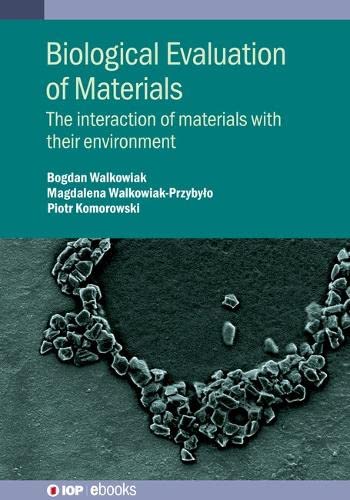

Most ebook files are in PDF format, so you can easily read them using various software such as Foxit Reader or directly on the Google Chrome browser.
Some ebook files are released by publishers in other formats such as .awz, .mobi, .epub, .fb2, etc. You may need to install specific software to read these formats on mobile/PC, such as Calibre.
Please read the tutorial at this link: https://ebookbell.com/faq
We offer FREE conversion to the popular formats you request; however, this may take some time. Therefore, right after payment, please email us, and we will try to provide the service as quickly as possible.
For some exceptional file formats or broken links (if any), please refrain from opening any disputes. Instead, email us first, and we will try to assist within a maximum of 6 hours.
EbookBell Team

4.7
16 reviewsThe biological evaluation of materials involves the characterisation of materials using biological methods. At present, new materials are typically characterised using physicochemical methods. Such approaches don't account for the interactions that materials have with living organisms in their environment. This reference text covers the emerging field of materiomics: the holistic study of material function and behaviour using both physicochemical and biological methods.
The book presents a comprehensive strategy for the identification, characterisation and grouping of nanomaterials[BWI1] [BWI2] using biological methods. The focus is on methods from molecular biology, and complementary methods derived from quantum physics. The work discusses the interaction of materials with their environment, the field of materiomics, the biological recognition of materials, and the quantum basis of materials recognition by cells. The discussion of quantum mechanisms enables a deeper understanding of the interaction of biological objects with materials.
The key audience for this book includes researchers involved in the characterisation of materials, particularly biomaterials researchers and those interested in the interaction of materials science and the life sciences. The book will also be a valuable reference for postgraduate students and practitioners working in the fields of materials characterisation and biomaterials.
Key Features: